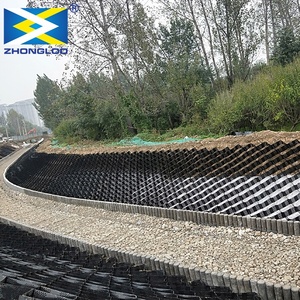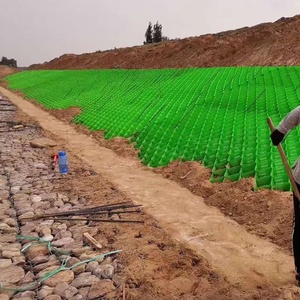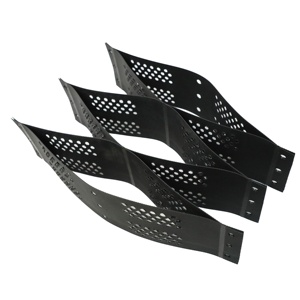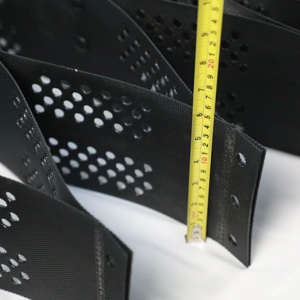
All categories
Featured selections
Trade Assurance
Buyer Central
Help Center
Get the app
Become a supplier

(8142 products available)




















































Various types of running track materials are suitable for different needs, ranging from traditional cinder tracks to modern synthetic surfaces. Each material comes with its own set of advantages and disadvantages. Here is a comprehensive overview of the most common types:
Cinder and Cinder Track Ash
This type of material is one of the oldest used for running tracks. It is composed of volcanic cinder or scoria. This ash provides a soft and crumbly surface. This material is known for its good drainage capabilities and low cost. However, it is also relatively rough on runners' feet and degrades more easily over time. This type of track requires more maintenance so as to remain in good condition.
Acrylic Track Material
This type of material is a synthetic running track that is made from a mixture of acrylic resin and silica sand. It is a popular choice for outdoor tracks and is known for its durability and versatility. It is also used to create a smooth and fast-running surface. This type of material is also resistant to extreme weather conditions and therefore does not fade easily over time. On the downside, an acrylic track can become slippery when wet and may require periodic resurfacing to maintain its quality.
Polyurethane Track Material
This is also a type of synthetic material that is made from a combination of polyurethane resins and rubber aggregates. It is commonly used for both indoor and outdoor running tracks. It provides a high level of shock absorption and excellent traction. This type of track is consistent and reliable in its performance, making it a favorite among professional athletes. However, the installation costs are quite high, and the material may degrade faster when exposed to heavy sunlight.
Artificial Turf Track
This is a unique type of running track that is made from synthetic fibers to resemble natural grass. It is popular in areas where natural grass cannot grow or be maintained easily. This material provides a soft and cushion-like surface that is easy on the joints of the runners. Additionally, it has excellent drainage capabilities and can be used for various sports. However, artificial turf can become extremely hot in direct sunlight and may require special maintenance equipment.
Natural Grass Running Track
These types of running tracks are made of natural grass. They provide a very soft and cushioned surface that is easy on the joints of the runners. Additionally, natural grass tracks are environmentally friendly and provide good drainage. However, they require a lot of maintenance in order to keep them in good condition. The maintenance includes regular mowing, watering, and fertilizing. Also, the grass tracks can become uneven and patchy over time.
Running tracks are built in various ways depending on the type of material used. Each material provides different usage scenarios based on its unique characteristics. Here are some common usage scenarios for running track materials:
Acrylic
Acrylic tracks are used for professional and competitive events. This is because the tracks provide a balance of performance, durability, and low maintenance. The tracks are preferred in sprinting and jumping events. This is due to their fast-drying ability after rain, which reduces the downtime for athletes.
Polyurethane
Polyurethane tracks offer high versatility and are able to withstand various weather conditions. These tracks are used in major sports events and Olympic games. The tracks have a longer lifespan compared to others, making them suitable for high-usage scenarios. This includes college and professional sports facilities.
Rubber
Hard rubber tracks are mainly used in playgrounds and training facilities. The soft tracks provide excellent shock absorption, which makes them suitable for recreational running and casual sports. The durability of the tracks enables them to withstand heavy foot traffic from casual users.
Grass
Natural grass tracks are preferable in events that require traditional running surfaces. These include steeplechase and other long-distance events. Grass tracks are also used in schools and community sports facilities with limited budgets for track construction.
Synthetic
Synthetic tracks are popular for their consistent performance and long lifespan. They are used in multi-sport facilities that host a variety of events from sprints to marathons. The all-weather capability makes them suitable for regions with distinct seasons.
Cinder
Cinder tracks are primarily used in lower-budget facilities and rural areas. They require less maintenance and are easier to repair than other materials. The traditional feel of cinder tracks is preferred by some long-distance runners for its historical significance.
Smart technology
The tracks embedded with smart technology are used in advanced training facilities. They provide data analytics for performance enhancement and injury prevention. The real-time monitoring capabilities make them suitable for professional coaching and athlete development programs.
When buying materials for running tracks, customers should consider the facility's intended use, the budget, local climate conditions, maintenance requirements, and safety features.
Intended Use
Different types of running track materials suit various usage needs. For instance, if one plans to host competitive events, they should select polyurethane or rubberized materials because they are durable and provide good performance. On the other hand, if the running track is meant for casual running and community use, asphalt or cinder track might be more appropriate.
Budget
Business owners should also consider their budget in track material selection. High-end synthetic materials like polyurethane offer great durability and performance but at a high cost. Natural materials are more affordable, but they may require more upkeep and have a shorter lifespan. Weighing the initial installation costs against long-term maintenance expenses is essential.
Climate Conditions
Buyers should consider the local climate when selecting running track materials. If customers live in areas with extreme weather conditions, they should opt for durable materials like polyurethane or asphalt that can withstand temperature fluctuations, heavy rain, or snow. These materials have a longer lifespan and require minimal upkeep.
Maintenance Requirements
Different running track materials require other maintenance levels. For example, natural materials like grass or cinder tracks need regular grooming, watering, and topping up to stay in good condition. Conversely, synthetic materials like rubber or polyurethane require less maintenance and are more resistant to weather-related damage. Therefore, buyers should consider how much maintenance they are willing and able to perform.
Safety Features
Another vital factor when selecting running track materials is safety. High-quality synthetic tracks provide excellent shock absorption, reducing the risk of injury for runners. Materials like rubber or polyurethane also offer good grip, preventing slips and falls. It's essential to choose a material that meets safety standards for both recreational and competitive use.
Below are the features and function of running track materials:
Durability
Running track materials are constructed to allow for frequent use while withstanding the effects of weather and time. These materials can endure heavy use and last for many years with little maintenance.
Shock Absorption
The joints and muscles of the athletes are protected by the tracks' ability to absorb shocks. Injury rates are decreased when force is transmitted evenly across the body. This characteristic is especially important for longer-distance runners.
Maintenance Low
Some running track materials, like polyurethane and EPDM, require less maintenance because they are simple to clean and less prone to damage from weather.
Safety
Running tracks are built with safety in mind. The surface minimizes the risk of slips and falls, and its shock-absorbing properties help prevent injuries. Barriers and proper drainage systems are in place to protect the track from external hazards.
Athlete Performance
Running tracks are made to improve athletes' performance. The right level of traction enables sprinters to start quickly without slipping. The surface's consistency and elasticity provide runners with a reliable and responsive running environment, enhancing their speed and overall performance.
Color Variation
Running tracks can have different colors depending on the material used. For example, asphalt and concrete tracks are typically gray, while synthetic tracks can be red, blue, or any color specified by design preferences. The color not only affects the track's appearance but also its heat absorption and visibility.
Drainage Systems
Tracks are designed with proper drainage systems to prevent water accumulation on the surface. Good drainage ensures the track remains safe and usable in various weather conditions, reducing the risk of water-related damage and slipping hazards.
Q1: Can someone run on a track made of asphalt?
A1: Absolutely! An asphalt running track is built with a similar principle as a concrete track. However, it is more flexible than a concrete surface. Tracks made of asphalt are more prone to wear and tear, so they require maintenance to ensure a safe running surface. It is advisable to use a rubberized asphalt surface for less impact on the body.
Q2: What makes a running track fast?
A2: Several factors contribute to the speed of a running track. The quality of the running track material is paramount. A good quality track provides enough grip and is not too abrasive to cause excessive wear on shoes. The running track's surface is smooth and free from any bumps, holes, or debris. A well-maintained surface helps athletes run faster. The type of running track used also determines how fast runners can be. Synthetic running tracks are more popular because they provide good grip and cushioning. Runners experience less fatigue when running on synthetic tracks. The design and construction of the running track play an important role in how fast it is. Good drainage systems are important to ensure the surface is always dry and free from any obstruction.
Q3: How long do running track materials last?
A3: The lifespan of running track materials varies depending on the type used and the level of maintenance they receive. Synthetic tracks can last anywhere from 15 to 25 years with proper care. Natural grass tracks may need replacement every 10 to 15 years, while polyurethane and acrylic tracks often last up to 20 years. Regular inspections and timely repairs are crucial to extending the life of any running track.
Q4: What is the best time to run on a running track?
A4: The best time to run on a track largely depends on the environmental conditions and the track's usage. Early morning or late evening tends to be the best time, especially in hot climate conditions, as these times are cooler. These times are also ideal because the track is usually less crowded, allowing for uninterrupted running sessions. Avoid running on tracks during or immediately after heavy rain, as the surface may be slippery and prone to flooding. Additionally, check the schedule for any maintenance or events to ensure the track is available and in optimal condition.